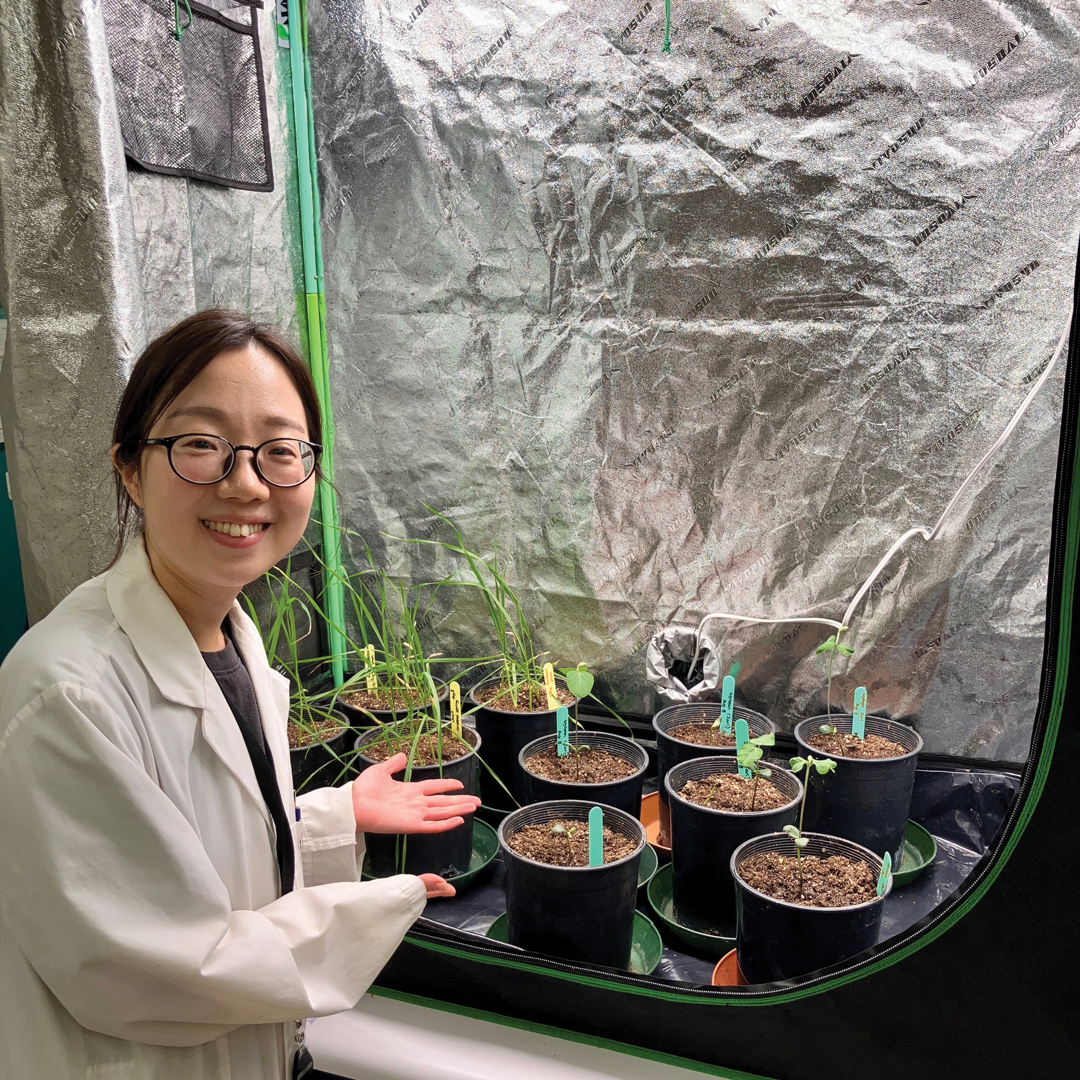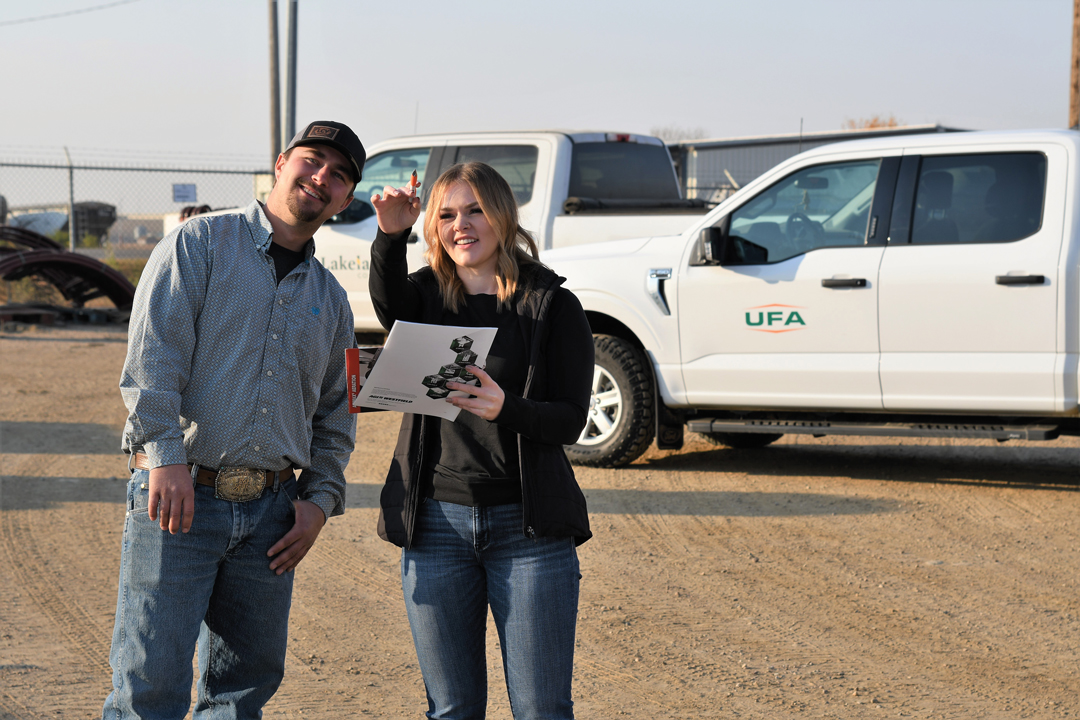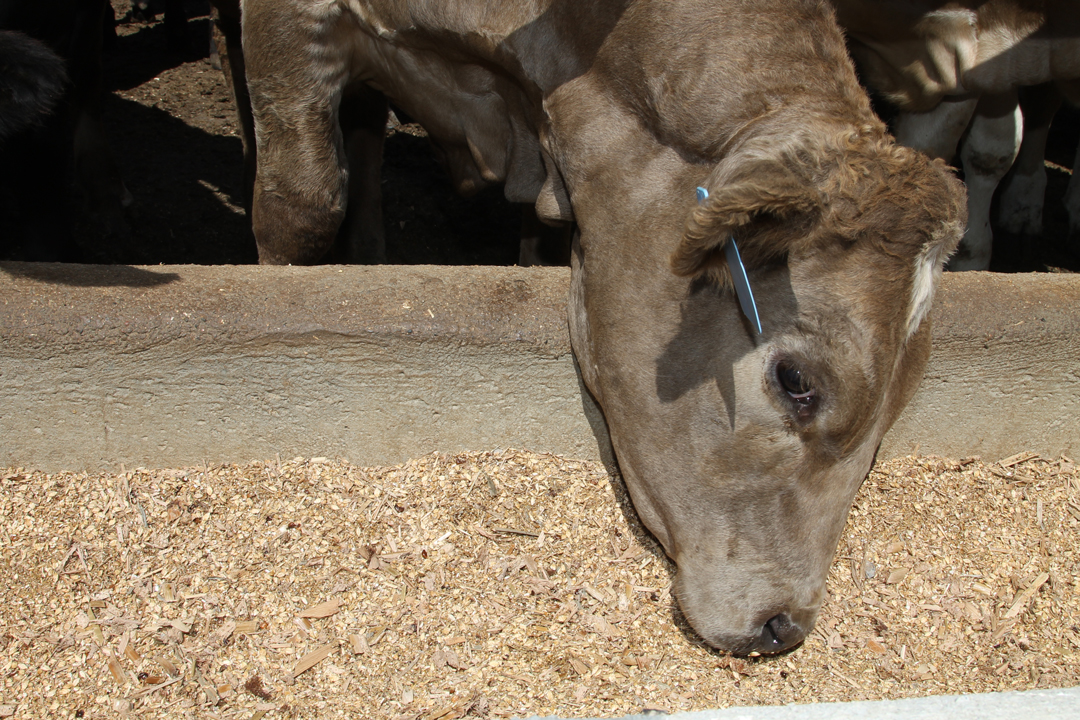RESEARCH, REPORT, REPEAT
BY GEOFF GEDDES • PHOTO COURTESY OF AAFC
Science has enriched the world in countless ways: the light bulb, penicillin, crazy glue. Speaking on the latter, research is the glue that holds the grain sector together. Alberta Grains annually approves funding for multiple studies that may benefit farmers.
Alberta Grains receives research proposals submitted through two streams: the Agriculture Development Fund (ADF) and the Agriculture Funding Consortium (AFC). The process begins with a letter of intent submitted by the researcher. The project must fall under one of Alberta Grains’ priority areas, which include variety development, genetic advancement, crop production and post-production. If it also aligns with research gaps and challenges faced by farmers, the organization requests a full proposal. This document outlines key aspects such as methodology, participants, budget and potential impact on Alberta farmers.
This is followed by an in-depth review from internal and external experts. Selected projects are considered by a research committee of eight to 10 farmers. Their final decision is based on scientific feasibility, merit, the likelihood of success and potential benefits.
Three recently approved studies nicely fit these requirements. These include a project intended to more quickly identify herbicide resistant weeds and a crop breeding initiative to identify wheat stem sawfly resistance traits in wheat. The third will examine smart technology that utilizes RNA as an alternative to chemical control of pests and pathogens.
A QUICK TEST IS BEST
Herbicide resistance is a growing problem in Western Canada. On the farm, step one is to identify a given weed and determine whether it is resistant. This is the focus of a project by Charles Geddes, a research scientist with Agriculture and Agri-Food Canada (AAFC). The process now requires a farmer to submit the seeds of a suspected HR weed to a certified lab. There, the seeds are sown, and the resulting plants are treated with herbicide and visually compared to control plants for symptoms. “It currently takes three to five months to have a weed tested for resistance,” said Geddes. “Because that testing occurs over the winter, you won’t have an answer until the next growing season.”
In response, his study aims to develop genetic tests to identify herbicide resistance more rapidly via leaf tissue samples. The project builds on a previous study that developed 14 genetic tests for resistance, and its target is to add eight more tests for resistance in Prairie weeds. “Our test will involve the grower placing a two-inch piece of leaf tissue in an envelope and sending it to the lab. In one or two weeks, we can determine if the genetic mutation that confers resistance is present.”
Instead of waiting over the winter to get results, farmers obtain prompt feedback that informs management practices for the current growing season.
Once the test format is finalized, scientists will validate it using a wide range of weed samples collected across the Prairies. “Because different mutations have different patterns of resistance, we are also examining which active ingredients are associated with the mutations we document,” said Geddes. “Based on that information, we can pinpoint the herbicides that work on specific weeds.”
Additionally, the genetic test requires far less lab resources and labour, which will lower their cost. “If all goes as planned, we should have these tests to producers in the near future,” said Geddes.
CUTTING EDGE SAWFLY RESEARCH
In recent years, the incidence of wheat stem sawfly has risen in Western Canada, and no pesticide options are available. Were they available, such sprays could risk eliminating the beneficial insects that now fight sawfly. Farmers need a tool to protect their crops, and scientists at the University of Saskatchewan Crop Development Centre (CDC) hope to create it. Based on their previous findings that sawfly stem cutting was much lower in hollow stemmed varieties such as CDC Vantta durum, they seek to identify the basis of resistance in hollow stemmed breeding material.
“There seems to be a different source of resistance in these lines, so we want to explore that,” said Curtis Pozniak, professor and CDC director. “In doing so, we aim to create a DNA test so we can tag that resistance and replicate it in our breeding programs.”
The team will develop controlled genetic mapping of weed populations, in which resistance genes are located and tracked. Crossing CDC Vantta with lines that don’t carry the resistance, they will create a series of progeny. In field trials, the number of sawfly cuttings will be counted. As well, DNA tests will be carried out on these crosses and compared against field results to identify patterns.
“When we see reduced cutting in a particular DNA profile, we will then address a number of questions. Which DNA marker correlates with that trait? where is that marker located in the genome? how many genes confer sawfly resistance? which genes can be tagged to track that resistance?”
With answers in hand, researchers can generate varieties with strong resistance to wheat stem sawfly.
CAN RNA SAVE THE DAY?
Apart from killing the bad guys, pesticides, herbicides and fungicides share another trait: They kill the good guys, too. “If you want to spray for a weed like kochia, for example, it will impact many other plants that you didn’t want to touch,” said Justin Pahara, AAFC research scientist. “The same is true with insecticides. They affect the nervous
system, and since all insects have one, you end up killing several types along with the species of interest.”
This project reflects the larger mission of the AAFC NanoLab. Its development of next-generation crop treatments with nanotechnology includes the use of RNA—molecules essential to most biological functions—to penetrate the target. In technical terms, Pahara calls it, “reliably getting really small stuff into stuff.” By activating specific proteins, this technology enables high specificity in spraying to avoid collateral damage. The approach could also address new pest or disease threats as they emerge, or support drought or salt tolerance.
“Step one is to achieve penetration with RNA molecules, a task that has eluded researchers and companies for the last 20 years,” said Pahara. “Some people have managed it in a lab, using a syringe to inject the plant, but I can’t see a farmer doing that in the field.”
In pursuit of a “field friendly” approach, scientists developed specialized spray chambers. They will then bind various nanoparticles to RNA molecules and spray them onto plants.
“As part of our research, we are using genetically modified plants that fluoresce green when exposed to ultraviolet light,” said Pahara. “When these crop plants are growing normally, they fluoresce. After spraying them with our formulations, we monitor for decreases in that fluorescence, which signifies that a particular formulation is working.”
Ultimately, this study seeks a modern solution to an age-old problem. “We are using 20th century tools like broad spectrum chemicals to protect crops. As pests and weeds get more resistant, these methods lose much of their power.”
Use of conventional ag chemicals is also being restrained by government regulations and legal actions alleging health risks. Given this reality, input companies seek alternatives. “There is a pressing need to forge the next generation of tools,” said Pahara. “If we can aid Canadian agriculture to carry the torch forward on a new approach, our job is done.”







Comments